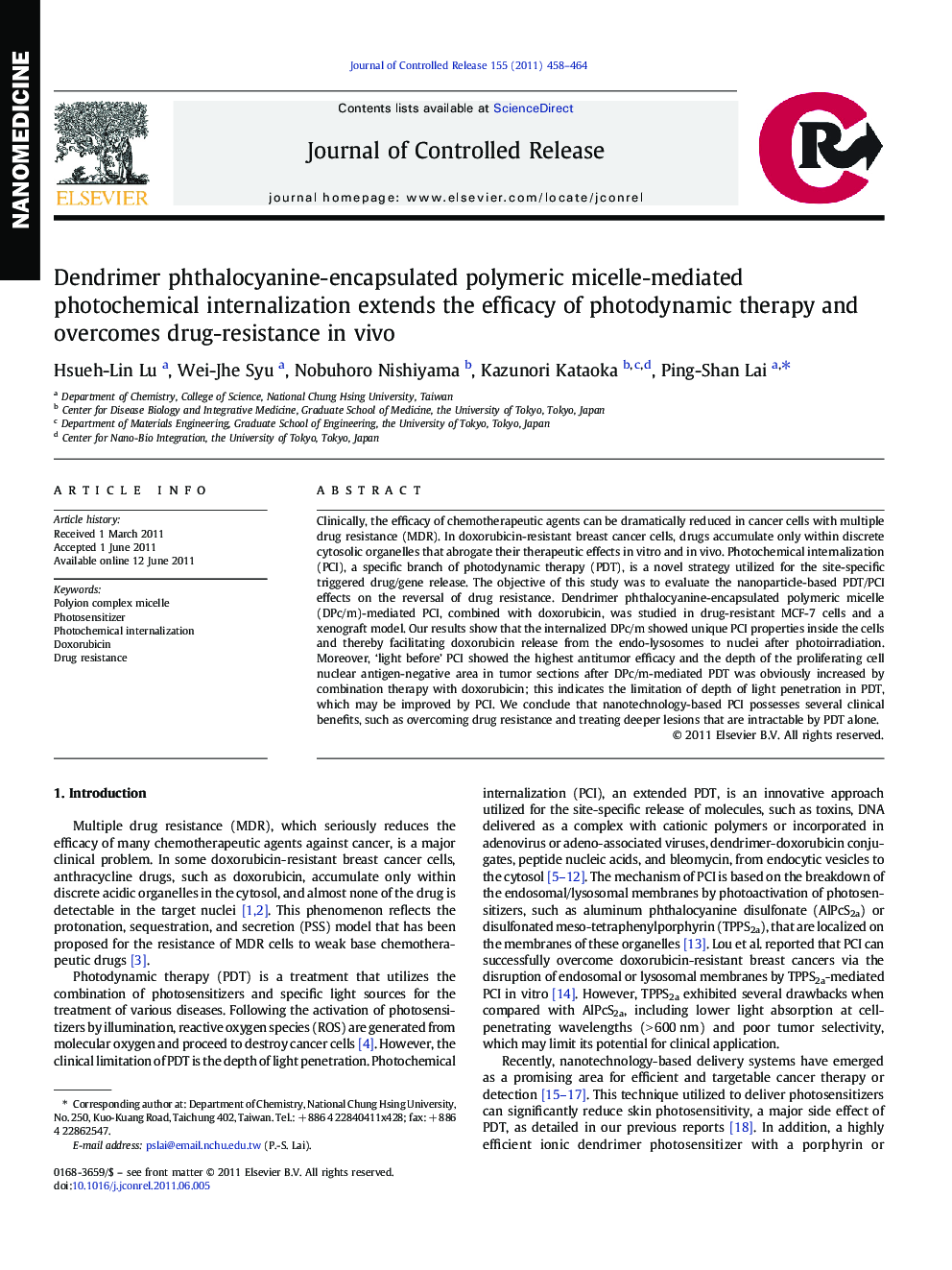| Article ID | Journal | Published Year | Pages | File Type |
|---|---|---|---|---|
| 1424885 | Journal of Controlled Release | 2011 | 7 Pages |
Clinically, the efficacy of chemotherapeutic agents can be dramatically reduced in cancer cells with multiple drug resistance (MDR). In doxorubicin-resistant breast cancer cells, drugs accumulate only within discrete cytosolic organelles that abrogate their therapeutic effects in vitro and in vivo. Photochemical internalization (PCI), a specific branch of photodynamic therapy (PDT), is a novel strategy utilized for the site-specific triggered drug/gene release. The objective of this study was to evaluate the nanoparticle-based PDT/PCI effects on the reversal of drug resistance. Dendrimer phthalocyanine-encapsulated polymeric micelle (DPc/m)-mediated PCI, combined with doxorubicin, was studied in drug-resistant MCF-7 cells and a xenograft model. Our results show that the internalized DPc/m showed unique PCI properties inside the cells and thereby facilitating doxorubicin release from the endo-lysosomes to nuclei after photoirradiation. Moreover, ‘light before’ PCI showed the highest antitumor efficacy and the depth of the proliferating cell nuclear antigen-negative area in tumor sections after DPc/m-mediated PDT was obviously increased by combination therapy with doxorubicin; this indicates the limitation of depth of light penetration in PDT, which may be improved by PCI. We conclude that nanotechnology-based PCI possesses several clinical benefits, such as overcoming drug resistance and treating deeper lesions that are intractable by PDT alone.
Graphical abstractFigure optionsDownload full-size imageDownload as PowerPoint slide
